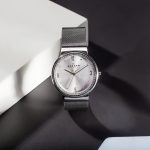A quality mousepad plays a crucial role in enhancing your mouse tracking accuracy and responsiveness. Different materials and textures impact how smoothly your mouse glides, giving you more control or speed based on your needs. The right size also helps optimize your workspace, making it easier to execute precise movements. Plus, regular cleaning keeps your mousepad in top shape. There's more to explore about how mousepads can elevate your experience, so keep going to discover additional insights.
Table of Contents
Key Takeaways
- Mousepads with smooth surfaces enhance rapid mouse movements, improving tracking accuracy for fast-paced tasks like gaming.
- Textured mousepads offer greater control, allowing for precise movements that benefit professional tasks requiring accuracy.
- The choice of material affects tracking efficiency; advanced materials optimize mouse responsiveness for various mouse types.
- Regular maintenance, such as cleaning, prevents dirt buildup that can hinder mouse tracking performance over time.
- Ergonomic designs with built-in wrist rests promote better posture, reducing strain and enhancing overall comfort during extended use, which improves tracking consistency.
Understanding Mousepad Materials
When it comes to mousepads, the materials they're made from can greatly impact your gaming or work experience.
You'll find mousepads made from cloth, plastic, and even metal, each offering unique benefits. Cloth pads are soft and provide comfort during long hours, while plastic pads deliver a slick surface for quick movements.
Mousepads come in various materials like cloth for comfort or plastic for speed, each enhancing your experience in different ways.
Metal mousepads are durable and often have a sleek design, but can be cold to the touch. The choice of material affects not only the feel but also the longevity and performance of your mouse.
Consider your personal preferences and the type of tasks you do. By selecting the right material, you'll enhance your precision, speed, and overall enjoyment, making each click feel just right.
The Importance of Texture in Tracking
The texture of a mousepad plays a significant role in how accurately your mouse tracks movements. A smooth surface allows for quick gliding, perfect for fast-paced gaming, while a rougher texture offers more control for precision tasks. Depending on your activities, the right texture can enhance your performance, making every click feel more responsive.
| Texture Type | Ideal Use | Feelings Evoked |
|---|---|---|
| Smooth | Gaming | Fast, Exciting |
| Rough | Design/Editing | Controlled, Focused |
| Hybrid | Versatile Use | Balanced, Flexible |
Choosing the right texture not only affects your mouse's accuracy but also enhances your overall experience, making it crucial for your setup.
Size Matters: Choosing the Right Dimensions
Choosing the right size for your mousepad is crucial for optimizing your workspace and ensuring comfort during use.
If you have limited desk space, a compact pad might work best, allowing for easy movement while keeping your area tidy. However, if you enjoy wide-ranging motions, a larger mousepad gives you the freedom to swipe and glide without restriction.
Measure your desk and consider your mouse sensitivity settings—higher sensitivities may require less movement, while lower ones benefit from more space.
Don't forget about your personal preferences, too; some people prefer a substantial surface, while others like a minimalist approach.
Ultimately, picking the right dimensions can enhance your productivity and comfort, making every click and scroll feel effortless.
Gaming vs. Professional Use: Tailoring Your Mousepad
Whether you're a gamer honing your skills in a competitive arena or a professional tackling daily tasks, selecting the right mousepad can significantly impact your performance.
Here's how to tailor your choice:
- Surface Texture: Gamers often prefer a smoother surface for quick, precise movements, while professionals may benefit from a textured surface that enhances control during long work sessions.
- Size and Space: Consider your workspace. A larger mousepad offers more freedom for gaming, while a compact pad can fit neatly on a professional desk.
- Thickness and Comfort: Padding matters. A thicker mousepad can provide comfort during extended use, but gamers might opt for thinner pads for better responsiveness.
Choosing wisely ensures you enhance your experience, whether you're gaming or working.
Cleaning and Maintenance for Optimal Performance
To keep your mousepad performing at its best, regular cleaning is essential.
Different materials require specific care techniques, so knowing how to maintain yours is key.
Watch for signs of wear, as they can impact your tracking accuracy and overall experience.
Regular Cleaning Techniques
While many people overlook mousepads in their cleaning routine, regular maintenance is crucial for ensuring optimal performance. A clean mousepad can enhance tracking accuracy and prolong its lifespan.
Here are three simple cleaning techniques you should follow:
- Dusting: Use a soft, dry cloth to regularly wipe away dust and debris. This prevents buildup and maintains a smooth surface.
- Spot Cleaning: For stains, lightly dampen a cloth with water or mild detergent and gently scrub the affected area. Rinse with a clean, damp cloth afterward.
- Deep Cleaning: Every few months, immerse your mousepad in warm soapy water, then rinse thoroughly and allow it to air dry completely before use.
Material-Specific Care Tips
Cleaning your mousepad isn't just about keeping it tidy; different materials require specific care to maintain their performance.
For cloth mousepads, use a mild detergent and warm water. Gently scrub with a soft cloth or sponge, then rinse thoroughly and air dry. Avoid direct sunlight as it can cause fading.
If you have a hard plastic or metal mousepad, a damp cloth with a bit of rubbing alcohol works wonders. Wipe it down regularly to prevent grime buildup, and dry it completely to avoid any slipping.
For rubber mousepads, simply wipe them with a damp cloth. Make sure they're fully dry before use to keep them from becoming sticky.
With the right care, your mousepad will perform at its best!
Signs of Wear
As you use your mousepad over time, you'll start noticing signs of wear that can impact its performance.
Keeping an eye on these signs helps ensure your mouse tracking remains smooth and accurate. Here are three common indicators that your mousepad needs attention:
- Faded Surface: If the design or texture starts to fade, it can affect tracking precision.
- Frayed Edges: Worn edges can cause distractions and even impact mouse movement.
- Stains or Dirt Buildup: Accumulated grime can hinder your mouse's optical sensor, leading to erratic movement.
Regular cleaning and maintenance can prolong your mousepad's life and enhance your overall experience.
Don't wait for these signs to worsen; address them promptly for optimal performance!
Innovations in Mousepad Technology
As you explore the latest in mousepad technology, you'll find exciting advancements in surface materials that enhance your experience.
Adaptive tracking features are revolutionizing how your mouse interacts with the pad, making precision easier than ever.
Plus, ergonomic design innovations are ensuring comfort during those long hours at the computer.
Enhanced Surface Materials
While traditional mousepads often relied on simple fabric surfaces, innovations in enhanced surface materials are revolutionizing the way we interact with our devices.
These advancements are designed to improve precision and responsiveness, making your mouse movements smoother and more accurate. Here are three key materials that stand out:
- Micro-textured Surfaces: These provide a perfect balance between speed and control, allowing your mouse to glide effortlessly while still maintaining accuracy.
- Hard Plastic: Offering a durable and smooth surface, hard plastic mousepads are ideal for fast-paced gaming and professional tasks.
- Hybrid Materials: Combining fabric and hard surfaces, these mousepads deliver versatility, catering to both casual users and gamers alike.
Investing in the right material can significantly enhance your overall mouse tracking experience.
Adaptive Tracking Features
Enhanced surface materials have paved the way for exciting developments in adaptive tracking features. These innovative mousepads can now adjust their texture and friction based on your movements.
Imagine a mousepad that senses your speed and dynamically alters its surface to enhance precision during fast-paced gaming or delicate tasks. This adaptability not only improves accuracy but also minimizes wear on your mouse's sensor.
Advanced sensors embedded in the mousepad track your mouse's movements in real-time, ensuring smooth transitions and reducing lag. You'll notice how these features provide a more responsive experience, allowing you to stay focused on your tasks.
With such technology, you can elevate your gaming and work efficiency to new heights, making every click count.
Ergonomic Design Innovations
Ergonomic design innovations in mousepad technology are transforming the way you interact with your computer.
These advancements focus on comfort and efficiency, making your computing experience smoother and more enjoyable.
Here are three key innovations to consider:
- Wrist Support: Many mousepads now feature built-in wrist rests that reduce strain and enhance comfort during long sessions.
- Textured Surfaces: New materials provide optimal tracking efficiency, ensuring your mouse moves fluidly and accurately across various tasks.
- Adjustable Sizes: Some designs allow you to customize the size of your mousepad, ensuring it fits perfectly on your desk and matches your workspace needs.
With these innovations, you'll not only improve your mouse tracking but also promote better posture and reduce fatigue.
Frequently Asked Questions
Can a Mousepad Improve My Gaming Performance Significantly?
Yes, a mousepad can improve your gaming performance significantly. It provides a consistent surface, enhances tracking accuracy, and allows for smoother movements, giving you that competitive edge during intense gaming sessions. Don't underestimate its impact!
How Often Should I Replace My Mousepad?
You should replace your mousepad every 6 to 12 months, depending on wear and tear. If you notice decreased performance or visible signs of damage, it's time to invest in a new one.
Do Mousepads Affect Wireless Mouse Performance?
Yes, mousepads can affect wireless mouse performance. A good surface enhances tracking accuracy, while a worn or dirty pad may hinder responsiveness. You'll notice smoother movements and better precision with the right mousepad choice.
Are There Ergonomic Benefits to Using a Mousepad?
Using a mousepad can offer ergonomic benefits by providing support for your wrist and promoting better hand positioning. It helps reduce strain during long sessions, making your computing experience more comfortable and efficient overall.
Can I Use a Mousepad on Any Surface?
You can use a mousepad on various surfaces, but its effectiveness may vary. Smooth, flat surfaces enhance tracking, while uneven or textured ones can hinder performance. Choose wisely for the best experience with your mouse.



